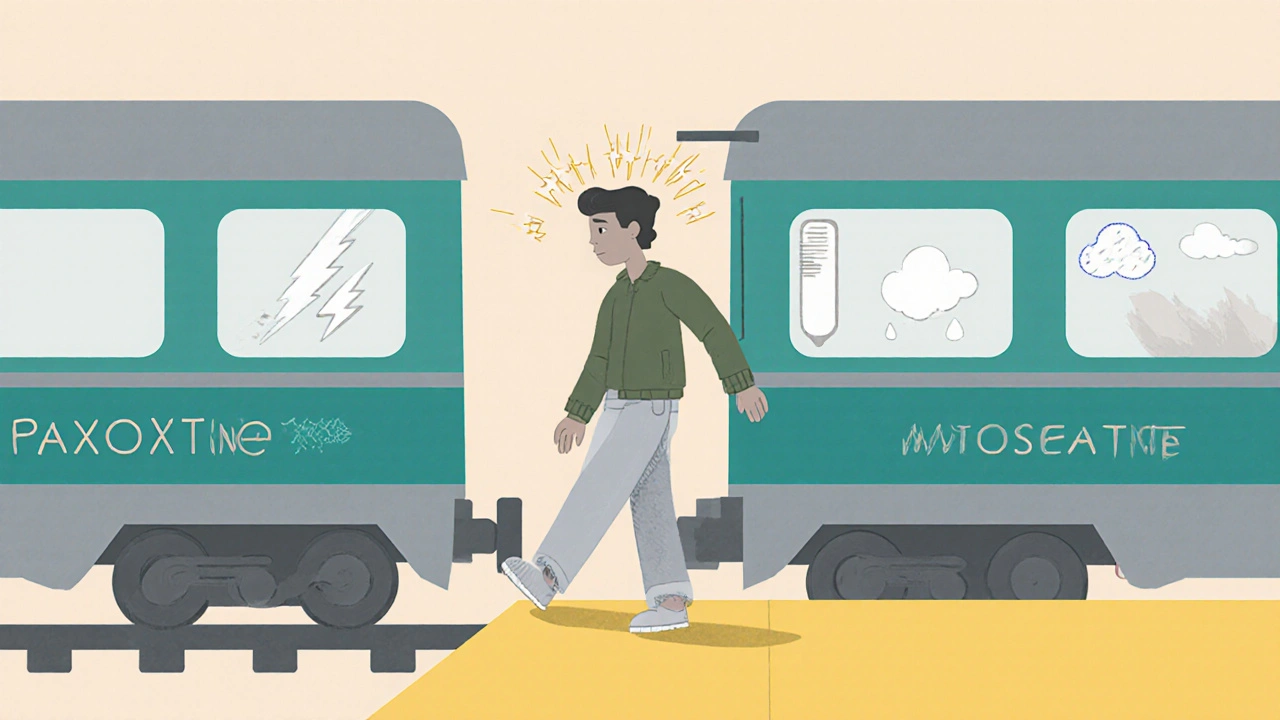When dealing with antidepressant withdrawal, the set of physical and psychological symptoms that appear after stopping or lowering the dose of an antidepressant. Also known as antidepressant discontinuation, it can feel confusing because each drug behaves differently and the body’s response varies widely. Understanding the basics helps you avoid panic and plan a smoother exit.
One key player in this picture is discontinuation syndrome, a cluster of flu‑like, sensory, and emotional symptoms that surface when an antidepressant is reduced too quickly. Another is tapering, the gradual reduction of medication dose designed to give the brain time to adapt. These two concepts are tightly linked: proper tapering reduces the risk of severe discontinuation syndrome. The drug’s half‑life also matters—a short half‑life drug (like paroxetine) often triggers sharper symptoms, while a long half‑life drug (like fluoxetine) usually eases the process. Finally, keep an eye on rebound depression, the return of depressive symptoms that can masquerade as withdrawal. In short, antidepressant withdrawal encompasses discontinuation syndrome, is influenced by medication half‑life, and can spark rebound depression if tapering isn’t handled carefully.
Practical steps start with a solid plan. First, talk to your prescriber about a personalized taper schedule; a common rule is to cut the dose by 10‑25% every 1‑2 weeks, adjusting for how you feel. Use a pill‑splitter or liquid formulation for finer control, especially with short‑acting drugs. Track symptoms in a diary—note headache, dizziness, electric‑shock sensations, mood swings, or sleep changes. If symptoms flare, pause the taper or increase the dose slightly before continuing. Support matters too: let a trusted friend or therapist know you’re tapering, so you have emotional backup. In some cases, short‑term adjuncts like low‑dose benzodiazepines or melatonin can smooth sleep disruptions, but always discuss these with a doctor. When symptoms become overwhelming or you suspect a relapse, seek professional help promptly; early intervention can prevent a full‑blown depressive episode.
Below you’ll find a curated set of articles that dive deeper into related issues—how acid‑reducing meds affect drug absorption, comparisons of popular supplements, and strategies for managing other medication side effects. These resources complement the withdrawal guide by giving you a broader view of medication management, so you can make informed choices throughout the whole process. Let’s explore the details together and equip yourself with the knowledge you need for a safe, confident transition.

Learn what antidepressant discontinuation syndrome looks like, why it happens, and how to taper safely to avoid severe withdrawal and protracted symptoms.
read more